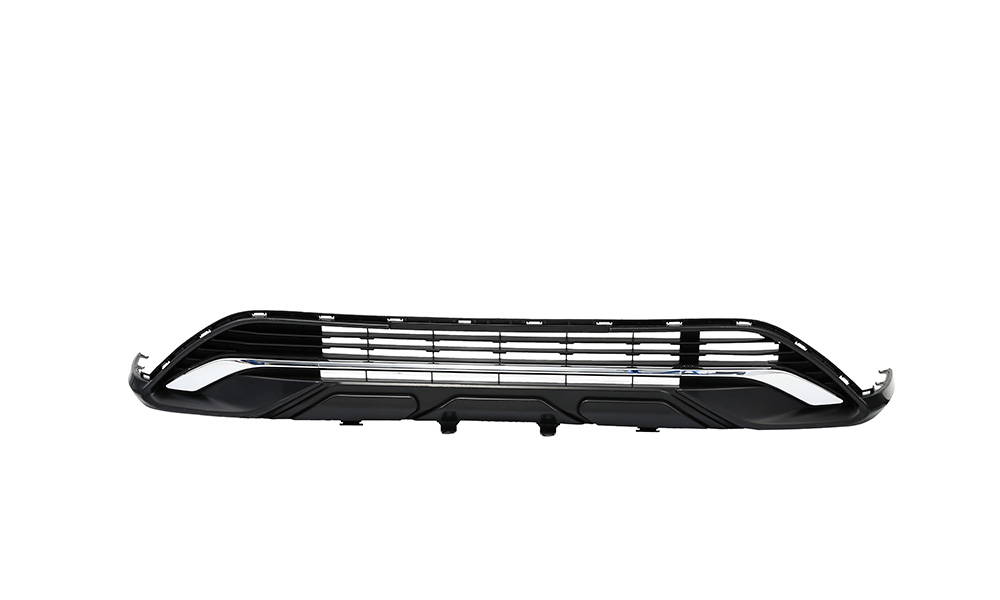OEM Auto Automotive Grill Manufacturing
The auto grille has evolved significantly over the decades, reflecting the changing tastes, technological advancements, and cultural influences of each era. As a key component of a vehicle's front fascia, the auto grille not only serves a functional purpose but also plays a crucial role in defining the vehicle's identity and aesthetic appeal. This article explores the design characteristics of auto grilles across different decades, highlighting the cultural influences that shaped their evolution.
In the early 20th century, auto grilles were primarily designed to serve a functional purpose: providing airflow to the engine and radiator. The design of these early grilles was straightforward, featuring simple, vertical bars that allowed for increasing airflow. The 1920s saw the emergence of more decorative grilles, influenced by the Art Deco movement, which emphasized geometric shapes and bold, symmetrical designs. This era's auto grilles often featured intricate patterns and chrome finishes, adding a touch of luxury and sophistication to the vehicles.
The 1930s and 1940s witnessed a continuation of the decorative trend, with auto grilles becoming more elaborate and ornate. The Great Depression and World War II had a significant impact on the automotive industry, contributing to a focus on durability and practicality. However, the post-war economic boom of the 1950s brought a renewed emphasis on style and luxury. Auto grilles during this period often featured large, chrome-plated designs with intricate patterns and emblems, reflecting the optimism and affluence of the era. The 1950s also saw the introduction of the "fins" trend, which extended to the grille design, creating a more aggressive and dynamic appearance.
The 1960s and 1970s were marked by a shift towards more streamlined and aerodynamic designs, influenced by the Space Age and the growing awareness of environmental issues. Auto grilles during this period became more integrated into the overall design of the vehicle, often featuring horizontal bars and minimalist designs. The 1970s saw the rise of the "eggcrate" grille, characterized by a grid-like pattern that provided both airflow and a distinctive visual identity. This era also witnessed the introduction of plastic grilles, which were lighter and more cost-effective than their metal counterparts.
The 1980s and 1990s brought a renewed focus on aerodynamics and fuel efficiency, contributing to the development of more streamlined and integrated grille designs. The 1980s saw the rise of the "flush" grille, which was designed to be as smooth and aerodynamic as possible. This era also witnessed the introduction of the "split grille," which divided the grille into two sections, creating a more dynamic and aggressive appearance. The 1990s continued this trend, with auto grilles becoming more integrated into the overall design of the vehicle, often featuring hidden or retractable designs that improved aerodynamics.
The 21st century has seen a resurgence of bold and distinctive grille designs, influenced by a desire for individuality and brand identity. The 2000s and 2010s witnessed the rise of the "spindle grille," popularized by luxury brands like Lexus, which features a distinctive hourglass shape. This era also saw the introduction of the "mesh grille," characterized by a fine mesh pattern that provided both airflow and a modern, high-tech appearance. The 2010s also witnessed the rise of the "blacked-out" grille, which featured a dark, monochromatic finish that created a more aggressive and sporty appearance.
The cultural influences on auto grille design are multifaceted, reflecting broader trends in art, technology, and society. The Art Deco movement of the 1920s and 1930s, for example, emphasized geometric shapes and bold, symmetrical designs, which were reflected in the intricate patterns and chrome finishes of the era's auto grilles. The post-war economic boom of the 1950s brought a renewed emphasis on style and luxury, contributing to the introduction of large, chrome-plated grilles with intricate patterns and emblems. The Space Age of the 1960s and 1970s, with its focus on aerodynamics and futuristic design, influenced the development of more streamlined and integrated grille designs.
The environmental awareness of the 1970s and 1980s led to the development of more aerodynamic and fuel-efficient grille designs, while the technological advancements of the 1990s and 2000s enabled the creation of more sophisticated and integrated grille designs. The 21st century has seen a resurgence of bold and distinctive grille designs, influenced by a desire for individuality and brand identity, as well as the rise of digital technology and social media, which have enabled consumers to express their personal style and preferences more freely.
In conclusion, the design of auto grilles has evolved significantly over the decades, reflecting the changing tastes, technological advancements, and cultural influences of each era. From the simple, functional designs of the early 20th century to the bold, distinctive grilles of the 21st century, auto grilles have played a crucial role in defining the identity and aesthetic appeal of vehicles. The cultural influences on auto grille design are multifaceted, reflecting broader trends in art, technology, and society, and have shaped the evolution of this key component of the vehicle's front fascia. As automotive technology continues to advance, the design of auto grilles will likely continue to evolve, reflecting the changing needs and preferences of consumers and the broader cultural landscape.

 English
English 日本語
日本語 Français
Français Deutsch
Deutsch Español
Español 简体中文
简体中文

 View More >>
View More >> View More >>
View More >> View More >>
View More >> View More >>
View More >> View More >>
View More >> View More >>
View More >> View More >>
View More >>(canaddletterfordraptor)-1.jpg) View More >>
View More >> View More >>
View More >> View More >>
View More >> View More >>
View More >>
